Traditionally, the floor of any Japanese tatami room is covered with tatami mats that are woven with rice straw. The purpose of these thick tatami mats is for people to comfortably sit or sleep on the floor. Learn all about tatami rooms including its history, uses, and the different elements of a tatami room below!
If you’ve been living in Japan or simply interested in the Japanese culture, you would have come across the word “Tatami” and the Tatami Room several times.
These days, a lot of western designers are trying to incorporate tatamis into their designs along with other Japanese and other Eastern elements.
Tatami rooms bring about a sense of openness, space and peace in a home. They are made from natural materials that bring with them a lot of health benefits.
What are Tatami Rooms?
Tatami mats were and are still widely used in Japan.
Tatami has its roots in the word “Tatamu” which translates to fold. Tatami mats were traditionally woven out of dried rushes which were then sewn to a core made from rice straw.
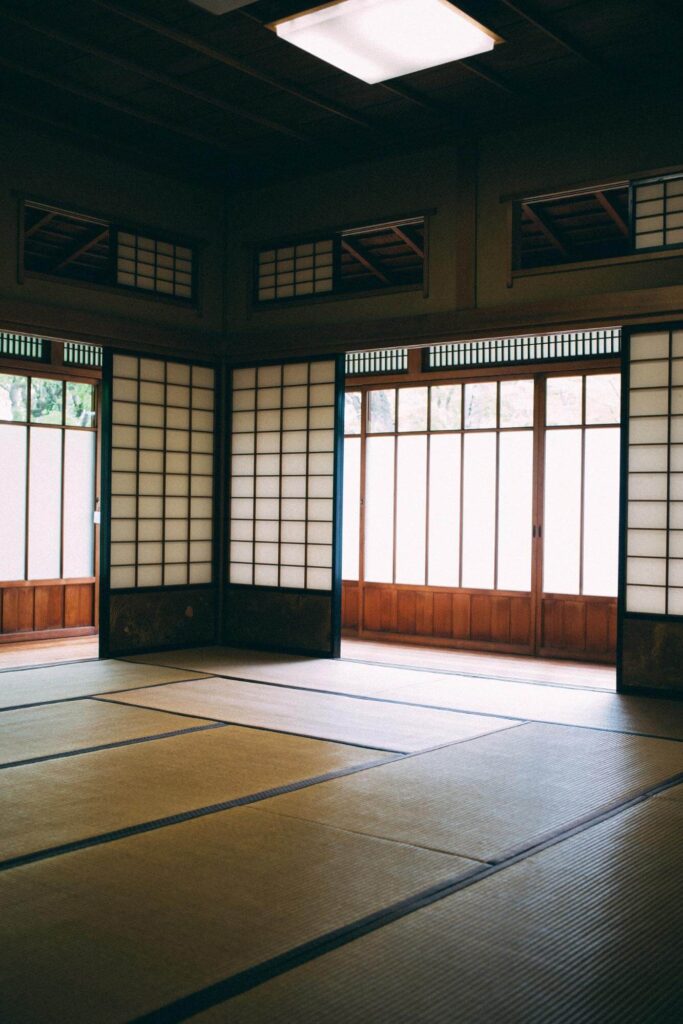
These were meant to make resting on the floor more comfortable. Tatami mats, when freshly made, have a beautiful green colour to them and the distinct smell of the rice straw.
Over time, the green fades to a dull yellow and the fragrance disappears as well.
They measure 3 feet by 6 feet, the right size for an adult. When not in use, they are folded and stacked.
Tatami mats were luxuries that could be afforded only by the rich and the nobility, while the common man had to rest on the hard floor.
They have their origins from the Muromachi Period, as early as the 14th century.
Over time, the rice straw has been replaced by synthetic material which is cheaper to purchase and easier to clean.
Origin and History of Tatami Culture in Japan
Tatami, often considered one of the most quintessential elements of the classic Japanese interior, has been used in the homes of the Japanese people since the beginnings of the Heian Period (794-1185).
This traditional technique of making and laying down the mats has been carried down since that time and still sparkles in the modern scenes of houses in Japan today.
Legend has it that the first tatami mats were made in the 12th century, using materials native to the country, such as rushes and stuffed with soft grass. These pliable mats were arranged in hallowed rooms where the aristocracy of the day feasted and entertained.
As time passed, the lower classes were granted entrance to these prized tatami rooms, making it a cultural phenomenon across different social classes.
These early tatami mats protected the ancient wooden floors of Japan and provided a comfortable, soft area for people to recline and dine in elegance and comfort.
Initially, the tatami mats were made from crushed, dried cypress and soft grasses, then bound together with sewn fabric strips of cloth to create the iconic cushioning effect the mats are known for today.
Many people would add decorations to their tatami mats by embroidering the fabric with flowers, hills and more.
As the centuries ebbed, tatami mats transcended their original function as a floor covering and became a form of art, seen in the various decorations such as lacquered trunks, wash basins and vests made with patterned brocades. These unique pieces are known as Fukusa, and can still be seen in today's tatami rooms.
The design of the tatami room has remained consistent over the centuries, with low tables and cushions scattered around the edge of the mat, while a tokonoma is placed in the centre, typically reserving space for artwork, symbolic flowers and seasonal decorations.
As the centuries passed, tatami mats were still made by hand and described as laborious work.
The mats were manually stitched together and the rush grasses were also tied by hand. Since the handmade materials were expensive, the tatami rooms were only accessible to the wealthy and aristocrats.
Today, tatami mats are produced in factories and are made with replacement materials such as foam and corn husk instead of rush grass.
The mats are machine-stitched and the rooms are now common
and accessible to all classes of people, still refusing to relinquish their esteemed place in the culture and history of Japan.
Why are Tatami mats expensive?
Weaving a tatami mat is a labour intensive process. It is not something that can be easily made by a machine. In Japan, there are artists who are specially trained in weaving Tatami mats.
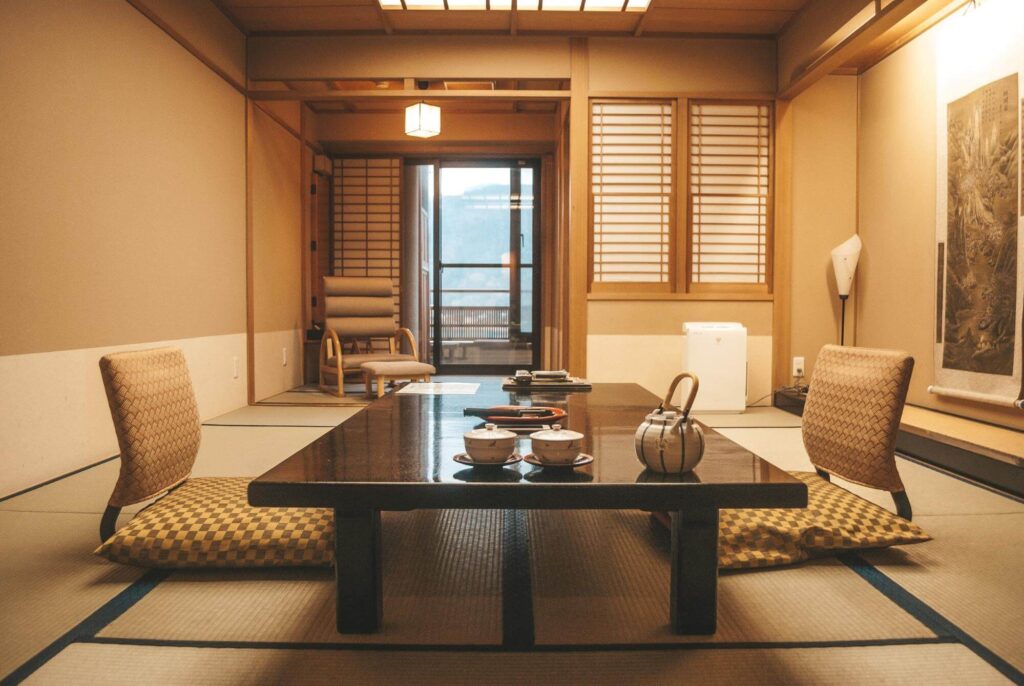
The synthetic or the rice straw core gives the mat its trademark springiness which makes it firm, yet very comfortable to sit on or lie down on.
Purpose of the Tatami Room
A tatami room, as you must have guessed, is one that has tatami mats.
Tatami rooms were used as spaces to rest by the aristocrats of Japan. The Tatami rooms of today have a lot more than just the mats.
Tatami rooms are often made even more comfortable by adding cushions and futons. You cannot use very heavy furniture as that could gouge the mats.
Tatami rooms also tend to have low ceilings and rice paper blinds. Tatami mats are not very durable, so they are used in places where people don’t step on much.
If tatami mats are used in a common space, it’s best to step on them without shoes.
These days, Tatami rooms are used as study areas in temples. In homes, tatami rooms are used for just about any purpose. Some people use them as living areas or as resting rooms, while many even use them as play rooms for their babies and children.
Elements of a Tatami Room
Many Japanese measure the size of a room based on the number of Tatami mats they can fit in.
Tatami mats are very commonly used in tea rooms of the house, or in rooms where they want to rest.
As it is with many things in the Japanese culture, they have certain specific numbers they follow for each room to bring in balance and harmony.
Since Tatami mats are kind of delicate, you have to be careful about the kind of furniture you use in the room.
There are some common elements as I have listed below. The fact that tatami mats can simply be folded and stacked, makes them very versatile and convenient.
Tatami mats work very well in modern and compact homes where the availability of space is always something that has to be kept in mind.
Sliding Doors: Fusuma
Tatami rooms have sliding doors called “Fusuma”. Fusuma was traditionally a thick canvas for painters, but over time they have been used as partitions in a room.
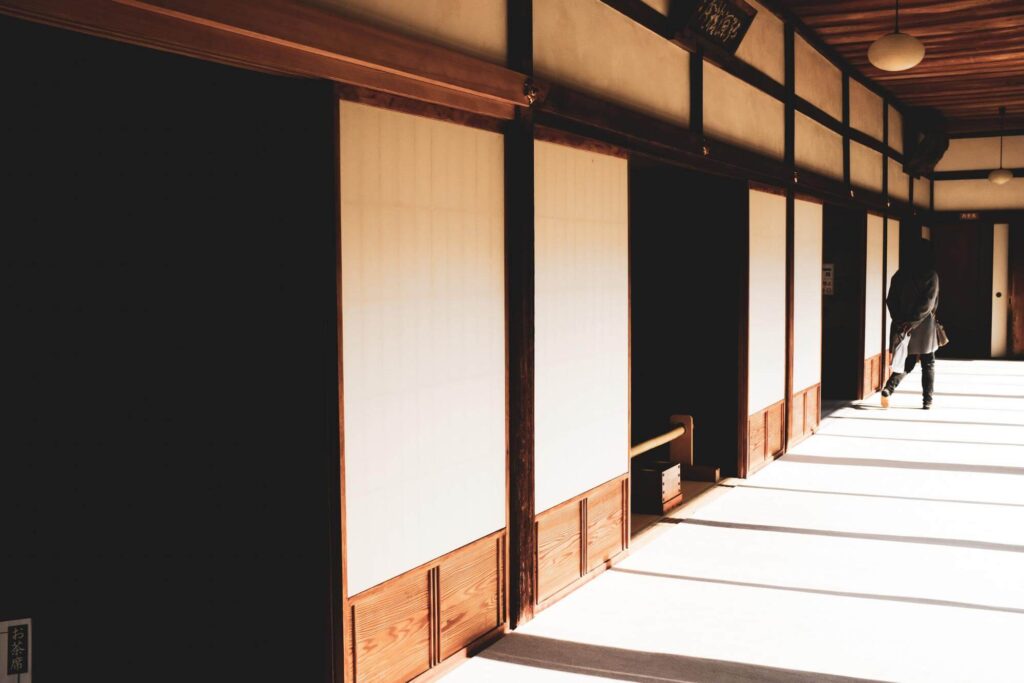
These thick, opaque sheets are supported by wooden frames and can be slid to make a space more open or to close it.
These fusumas can be seen in temples and shrines with elaborate decorations and paintings. In normal homes, they are more simple and plain.
The Partitions: Shouji
Shouji is a translucent partition that is supported by wooden lattices. These are also similar to sliding doors and are used for the same purpose as the Fusuma.
The difference between the Fusuma and the Shouji is that, since the latter is more translucent, it is used on the outsides of a room to allow light to enter, while the Fusuma is used inside the house.
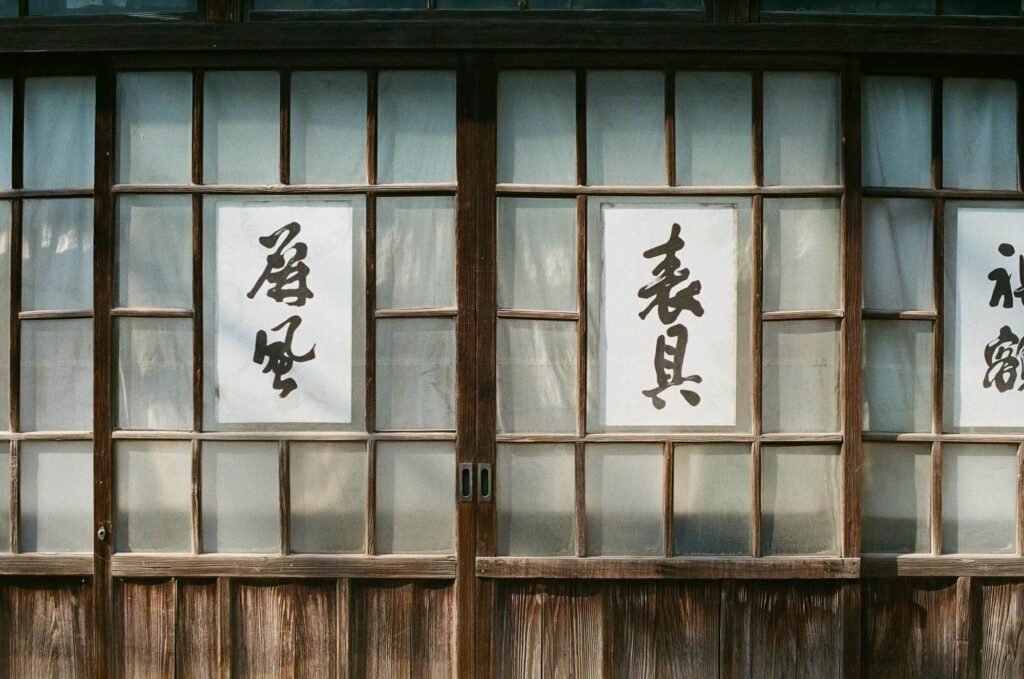
Being translucent, it gives you the necessary privacy but without cutting out natural light. These days, Shouji sometimes is fitted with glass on one side, but earlier, these allowed air to flow in as well.
The Closet: Oshiire
The Oshiire is a built in closet for storage. In today’s compact homes, this comes in very handy.
A lot of people use this to store extra bedding, linens and cushions that they may use in the tatami room.
It is also a good idea to store the Tatami mats when the room is being cleaned.
Some Tatami rooms also have built in shelves called “Chigaidana”. These are used to place decorative items like vases or incense.
Low Tables: Kotatsu
While you cannot really use heavy furniture in Tatami rooms (if you want the mats to last a while), a lot of Japanese use low tables called “Kotatsu”.
The Japanese have the practice of sitting down on the floor for meals and other activities and the Kotatsu is usually used for the same.
These tables, especially during the winters, are heated from underneath to offer warmth and they are covered with a blanket.
The Futon and Cushions (Zabuton)
Futons are plain mattresses that can be placed directly over the Tatami mats.
These are used for resting or sleeping on. Futons are a common sight in many Tatami rooms in Japanese homes.
When not in use, they are folded or rolled and placed inside the built in closets. To add more comfort, cushions (Zabutons) are also used in tatami rooms.
These are used for resting elbows or for kneeling. These cushions are also stored in the Oshiires when they are not used.
Use of a Tatami Room:
The natural materials of the tatami mats and the way they are woven help in regulating the temperature of the room they are laid in.
When tatami mats are used as a wall to wall carpeting in a room, they act as good insulation.
They keep the cold away and retain heat to keep the people inside the room warm and cosy during the biting cold winters.
In the summers, these tatami mats keep away the heat and keep it cool indoors. They also keep the air in the room fresh and crisp.
If you’re struggling with back aches, tatami mats and tatami rooms are the best to help ease your pain.
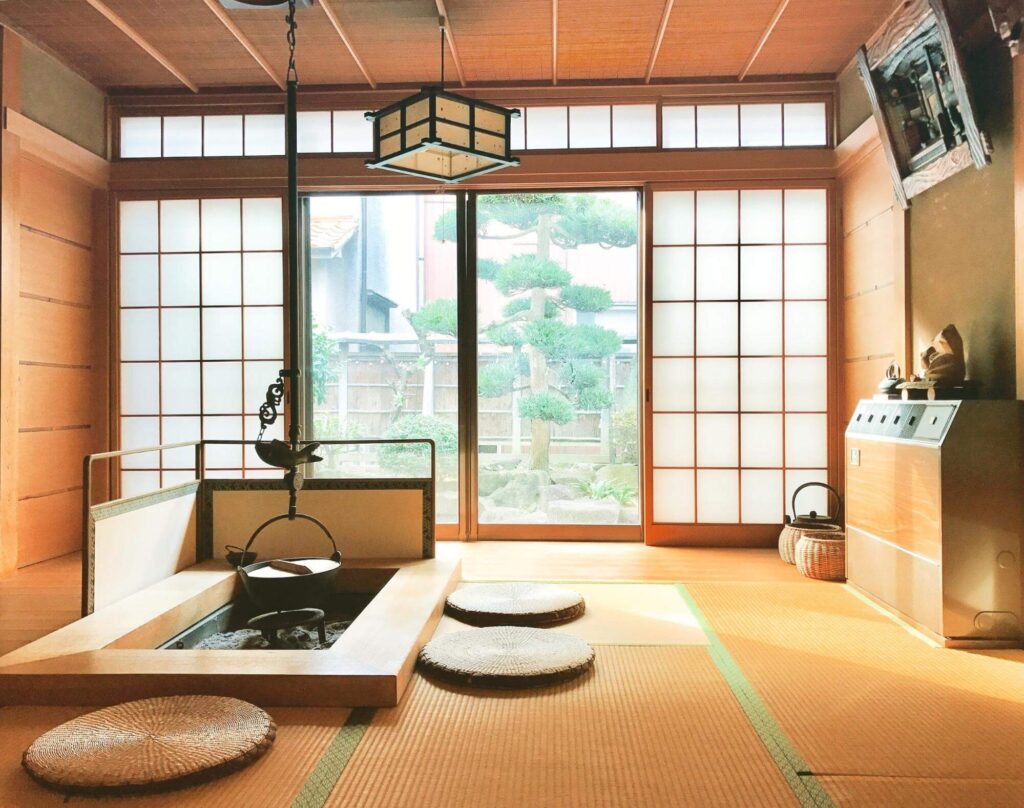
Tatami mats are springy, yet firm, giving your feet and back good support. These are great if you want to walk barefoot or lay on them with or without a thin futon.
These also provide good support if you want to practice yoga on them.
How to Clean Tatami Mat
Cleaning tatami mat is essential for keeping your traditional Japanese flooring looking its best and eliminating the dirt, dust and allergens that can build up over time.
With regular maintenance and cleaning, your tatami mat can last for decades and provide a beautiful, timeless look to any room. While the mat may seem delicate, with the right tools and instructions, cleaning is surprisingly easy.
Start by vacuuming the tatami mat with a soft brush attachment. This will help remove the largest dust and dirt particles that have accumulated.
Then, using either a handheld vacuum or a vacuum with an upholstery attachment, go over the mat again to eliminate any smaller debris or allergens.
For very dirty mats, you may want to repeat the process several times to get the tatami mat as clean as possible.
Next, use a damp cloth to gently wipe the tatami mat. It is important to use a cloth that is damp but not dripping wet, as too much moisture could ruin the mat.
Wring out the cloth completely until there are no more water droplets before wiping down the mat.
Start at the top of the mat and work your way down, so any dirt or dust that is dislodged doesn’t land on an already wet surface.
If there are any areas with tough stains, it is ok to use a bit of detergent on the cloth or a cleaner specifically designed for tatami mats.
Once the mat is clean, use a dry cloth to dab away any remaining moisture. Let the mat air dry completely before continuing.
Depending on the size and thickness of the tatami mat, this could take several hours. During this time, you can shake out and rotate the mat to help it air out.
Finally, open the windows or use a fan to circulate the air and hasten the drying process.
With the right tools and instructions, cleaning your tatami mat is easy. Regular maintenance and cleaning are essential for prolonging the life and giving you a beautiful, timeless look to any room.
Now that you know how to clean a tatami mat, you’ll be able to enjoy the pleasure of having one for years to come.
The Decline of the Tatami Mats:
These days, the sales of the Tatami mats have gone down by a lot and a lot of artists fear that they will be out of business soon.
Those who still like tatami mats are buying the synthetic ones that are mass produced and imported from China from cheap materials.
These resemble the original tatami only in appearance but not in the texture nor do they play an active role in improving your health.
Original Tatami mats made from rice straw are very difficult to maintain.
You cannot use any heavy furniture in a Tatami room as it could scratch the mats. A lot of people flip the mats over to prolong their life but even then, they only last a few years.
Tatami mats must also be kept away from water as that could ruin the straw. Maintenance is very difficult, especially if you lead a fast paced and busy life.
Though the rest of the world is trying to bring in more Eastern elements into their homes, the modern homes in Japan are trying to adapt Western elements.
A lot of western style furniture is being imported into Japan.
Traditionally, the Japanese sat on the floor and slept on thin futons, but now people want dining tables, couches, study tables and heavy cots.
These are harmful to the Tatami mats, so people and designers are trying to find more sustainable flooring options.
Also, a lot of youngsters find the colour and the odour of fresh Tatami mats to be unpleasant.
They also feel that the colour fading from the green to a dull yellow ruins the aesthetics of their interiors.
This is another reason why Tatami mats are being considered old fashioned by modern Japanese.
Also Read:



